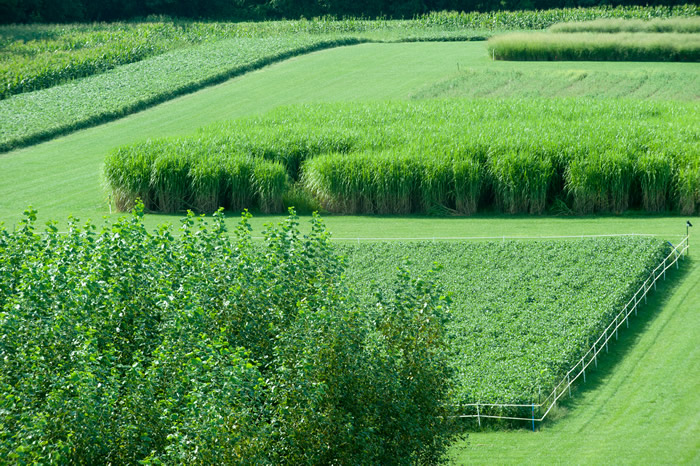With supportive policies, we envision the ability to design agricultural landscapes to maximize multiple benefits.
More to Biofuel Production than Yield
Michigan State University
When it comes to biofuels, corn leads the all-important category of biomass yield. However, focusing solely on yield comes at a high price.
In the current issue of the Proceedings for the National Academy of Sciences, Michigan State University researchers show that looking at the big picture allows other biofuel crops, such as native perennial grasses, to score higher as viable alternatives.
“We believe our findings have major implications for bioenergy research and policy,” said Doug Landis, MSU entomologist and one of the paper’s lead authors. “Biomass yield is obviously a key goal, but it appears to come at the expense of many other environmental benefits that society may desire from rural landscapes.”
Landis and a team of researchers from the Great Lakes Bioenergy Research Center compared three potential biofuel crops: corn, switchgrass, and mixes of native prairie grasses and flowering plants. They measured the diversity of plants, pest and beneficial insects, birds and microbes that consume methane, a greenhouse gas that contributes to climate change. Methane consumption, pest suppression, pollination and bird populations were higher in perennial grasslands.
In addition, the team found that the grass crops’ ability to harbor such increased biodiversity is strongly linked to the fields’ location relative to other habitats. For example, pest suppression, which is already higher in perennial grass crops, increased by an additional 30 percent when fields were located near other perennial grass habitats. This suggests that in order to enhance pest suppression and other critical ecosystem services, coordinated land use should play a key role in agricultural policy and planning, Landis said.
“With supportive policies, we envision the ability to design agricultural landscapes to maximize multiple benefits,” he said.

Photo Courtesy of Michigan State University
However, rising corn and other commodity prices tempt farmers to till and plant as much of their available land as possible. This includes farming marginal lands that produce lower yields as well as converting acreage set aside for the Conservation Reserve Program, grasslands and wetlands.
“Yes, corn prices are currently attractive to farmers, but with the exception of biomass yield, all other services were greater in the perennial grass crops,” Landis said. “If high commodity prices continue to drive conversion of these marginal lands to annual crop production, it will reduce the flexibility we have in the future to promote other critical services like pollination, pest suppression and reduction of greenhouse gasses.”
Additional MSU researchers who contributed to this study include: Ben Werling, Timothy Dickson, Rufus Isaacs, Katherine Gross, Carolyn Malmstrom, Leilei Ruan, Philip Robertson, Thomas Schmidt, Tracy Teal and Julianna Wilson. Researchers from the University of Wisconsin, University of Nebraska, Bard College and Trinity Christian College also were part of this research.
This research was funded by the Department of Energy, the National Science Foundation and MSU AgBioResearch.
The content & opinions in this article are the author’s and do not necessarily represent the views of AltEnergyMag
Comments (0)
This post does not have any comments. Be the first to leave a comment below.
Featured Product

